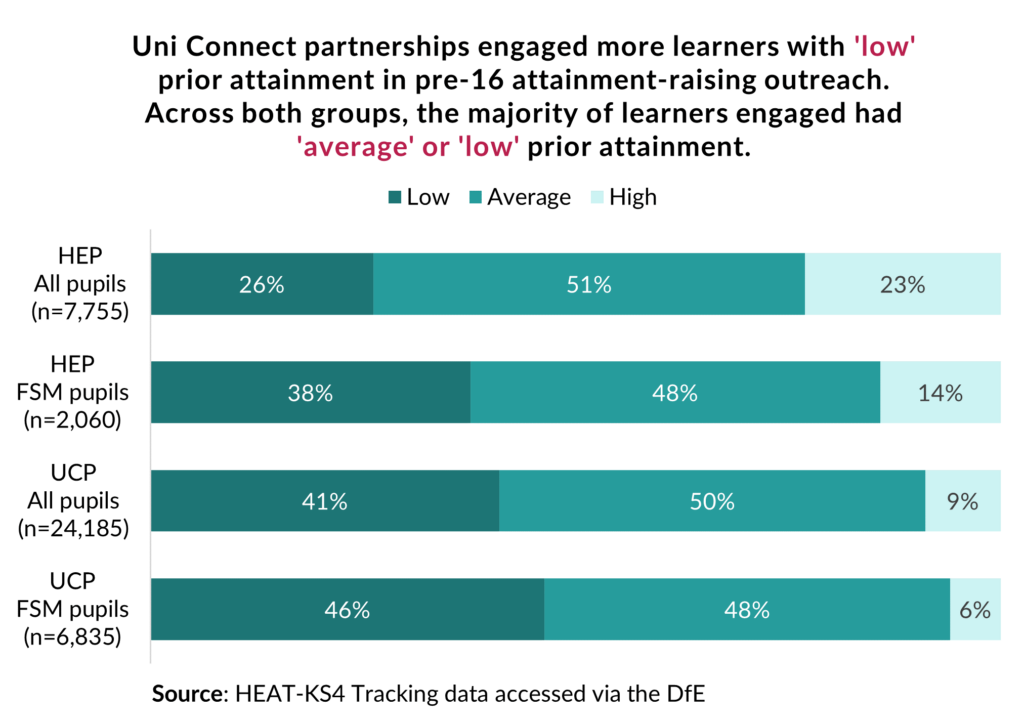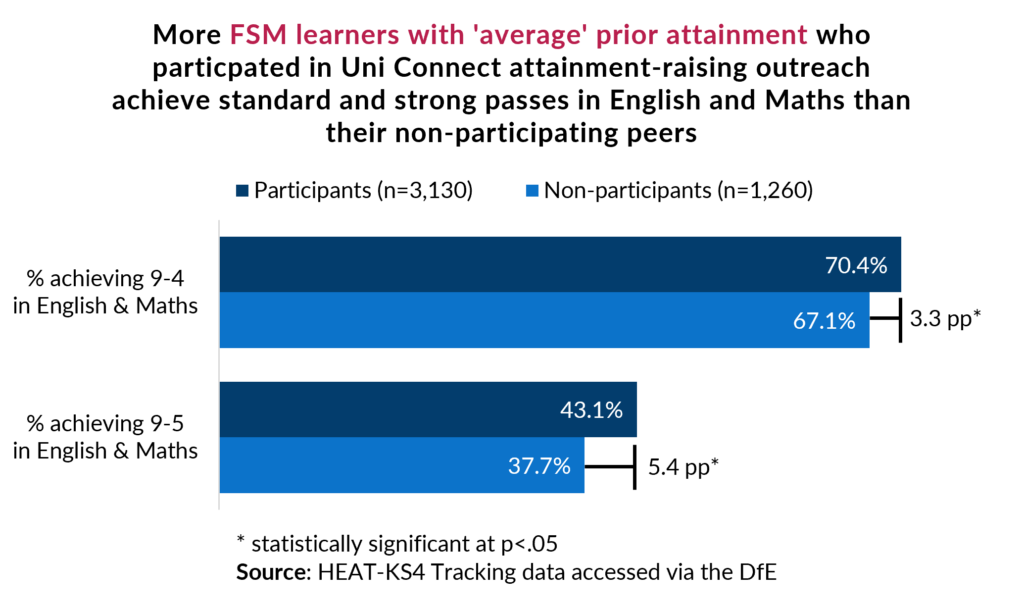Key Findings
 The majority of all learners engaged* by HEAT member providers in attainment-raising outreach had ‘average’ or ‘low’ prior attainment at Key Stage 2. This shows effective targeting of outreach by HEAT member providers to those students most at risk of failing to achieve at Key Stage 4
The majority of all learners engaged* by HEAT member providers in attainment-raising outreach had ‘average’ or ‘low’ prior attainment at Key Stage 2. This shows effective targeting of outreach by HEAT member providers to those students most at risk of failing to achieve at Key Stage 4
 Uni Connect partnerships engaged more learners in the ‘low’ prior attainment band than higher education providers, both in absolute and relative terms. This suggests that Uni Connect is reaching the most educationally disadvantaged learners, which higher education providers may not reach on their own
Uni Connect partnerships engaged more learners in the ‘low’ prior attainment band than higher education providers, both in absolute and relative terms. This suggests that Uni Connect is reaching the most educationally disadvantaged learners, which higher education providers may not reach on their own
 A larger proportion of Free School Meal learners with ‘average’ prior attainment, who participated in attainment-raising outreach, achieved standard and strong passes in Maths and English than their non-participating peers. This suggests that learners eligible for Free School Meals with ‘average’ attainment at Key Stage 2 benefitted the most from participating in attainment-raising outreach
A larger proportion of Free School Meal learners with ‘average’ prior attainment, who participated in attainment-raising outreach, achieved standard and strong passes in Maths and English than their non-participating peers. This suggests that learners eligible for Free School Meals with ‘average’ attainment at Key Stage 2 benefitted the most from participating in attainment-raising outreach
* ‘Learners engaged in attainment-raising outreach’ are those who participated in at least five hours of ‘Skills and Attainment’ outreach activities. Find out more in the Methodology section.



